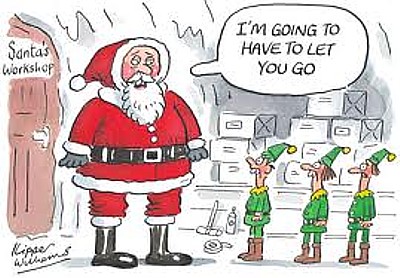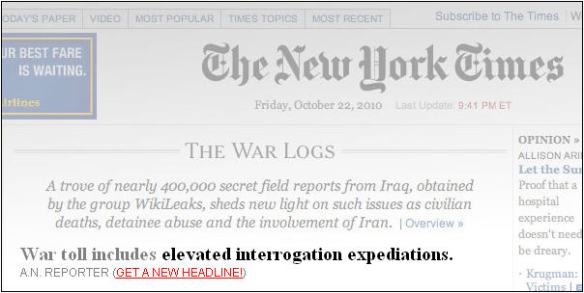Ambiguity Definition
Ambiguity or fallacy of ambiguity is a word, phrase, or statement which contains more than one meaning.Ambiguous words or statements lead to vagueness and confusion, and shape the basis for instances of unintentional humor. For instance, it is ambiguous to say “I rode a black horse in red pajamas,” because it may lead us to think the horse was wearing red pajamas. The sentence becomes clear when it is restructured “Wearing red pajamas, I rode a black horse.”
Similarly, same words with different meanings can cause ambiguity e.g. “John took off his trousers by the bank.” It is funny if we confuse one meaning of “bank” which is a building, to another meaning, being “an edge of a river”. Context usually resolves any ambiguity in such cases.
Common Ambiguity Examples
Below are some common examples of ambiguity:- A good life depends on a liver – Liver may be an organ or simply a living person.
- Foreigners are hunting dogs – It is unclear whether dogs were being hunted or foreigners are being spoken of as dogs.
- Each of us saw her duck – It is not clear whether the word “duck” refers to an action of ducking or a duck that is a bird.
- The passerby helps dog bite victim – Is the passerby helping a dog bite someone? Or is he helping a person bitten by a dog? It’s not clear.
Examples of Ambiguity in Literature
Although ambiguity is considered a flaw in writing, many writers use this technique to allow readers to understand their works in a variety of ways, giving them depth and complexity. Let us analyze some ambiguity examples in literature.Example #1
Read the following excerpt from “The Catcher in the Rye” by J. D. Salinger:“I ran all the way to the main gate, and then I waited a second till I got my breath. I have no wind, if you want to know the truth. I’m quite a heavy smoker, for one thing—that is, I used to be. They made me cut it out. Another thing, I grew six and a half inches last year. That’s also how I practically got t.b. and came out here for all these goddam checkups and stuff. I’m pretty healthy though.”The words “they” and “here” used by the speaker are ambiguous. But the readers are allowed to presume from the context that “they” might be the professionals helping out Holden and “here” might be a rehabilitation center.
Example #2
“The Sick Rose”, a short lyric written by William Blake, is full of ambiguities:“O Rose thou art sick.Many of the words in the above lines show ambiguity. We cannot say for sure what “crimson bed of joy” means; neither can we be exact about the interpretation of “dark secret love”. The ambiguous nature of such phrases allows readers to explore for deeper meanings of the poem.
The invisible worm,
That flies in the night
In the howling storm:
Has found out thy bed
Of crimson joy;
And his dark secret love
Does thy life destroy”
Some of those who have analyzed this poem believe that “Has found out thy bed, Of crimson joy” refers to making love.
Example #3
On a larger scale, ambiguity may develop in a character or in an entire story. For instance, Hamlet is a morally ambiguous character. He kills to avenge his father’s murder. He is good because he wants to protect his mother but he is bad because he is willing to kill whom he must to achieve this end.The ambiguity in Hamlet’s character is seen when he is hurt by the death of “Ophelia” which is his personal loss, but he does not appreciate the effect that his actions are going to have on others.
Example #4
We find ambiguity in the first line of Keats’s “Ode to a Grecian Urn”:“Thou still unravish’d bride of quietness,”The use of word “still” is ambiguous in nature. “Still” here may mean “an unmoving object” or it may be interpreted as “yet unchanged”.
Examples of ambiguity in a sentence
- A third factor amping your desire to speed things along: Despite the euphoria of those first kisses and dates, the initial stages of infatuation can be incredibly unsettling. “You aren't sure yet where you stand with your mate, so you're anxious to shake the ambiguity,” explains Regan. —Molly Triffin et al., Cosmopolitan, January 2008
- The troubles in the Empire at the turn of the seventeenth century have often been laid at the door of the Peace of Augsburg. While it is true that the 1555 agreement papered over some unsolvable problems and contained ambiguities and loopholes, it had been conceived as a pragmatic compromise, and it did succeed in preserving the peace in Germany for one generation. —Alison D. Anderson, On the Verge of War, 1999
- Her letters and diaries describe her own feelings of insecurity and worries about her possible fate if she could no longer work, and they also tell us a great deal about the ambiguity of her position within the society in which she lived, and her determination to defend and maintain her own status. —Joanna Martin, A Governess In the Age of Jane Austen, 1998
- Above the level of molecular biology, the notion of “gene” has become increasingly complex. The chapter in which Ridley addresses the ambiguities of this slippery word is an expository tour de force. He considers seven possible meanings of gene as used in different contexts: a unit of heredity; an interchangeable part of evolution; a recipe for a metabolic product; … a development switch; a unit of selection; and a unit of instinct. —Raymond Tallis, Prospect, September 2003
- the ambiguities in his answers
- <the ambiguity of the clairvoyant's messages from the deceased allowed the grieving relatives to interpret them however they wished>
Function of Ambiguity
Ambiguity in literature serves the purpose of lending a deeper meaning to a literary work. By introducing ambiguity in their works, writers give liberty to the readers to use their imagination to explore meanings. This active participation of the readers involves them in the prose or poetry they read.










